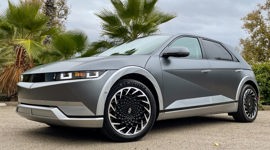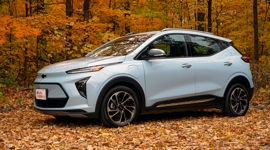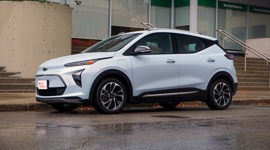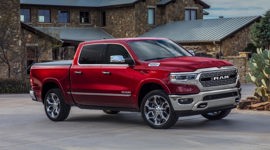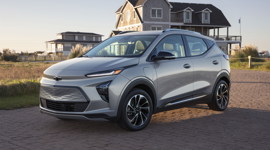If you’ve got a battery electric vehicle (BEV or EV) on your mind for your next new car, you’re not alone. Canada’s EV segment is growing quickly thanks to automakers’ efforts to stay ahead of the curve in terms of battery technology, driving range, and performance.
And with gas prices as high as they are, the interest in EVs is growing quickly. The good news is that the number of EVs has expanded wildly in the past couple years, meaning that there are now many electric options for different lifestyles and budgets. We also know that having so many options can make it difficult for you to pick the best one, but that’s where our team of experts come in. They’ve voted on the best EVs to buy in two price categories: Over $50,000 and under $50,000.
Here are the best electric vehicles to buy right now along with some notable new-for-2022 models we think should be considered too.
Best EVs Under $50,000 to Buy
Hyundai Ioniq 5/Kia EV6
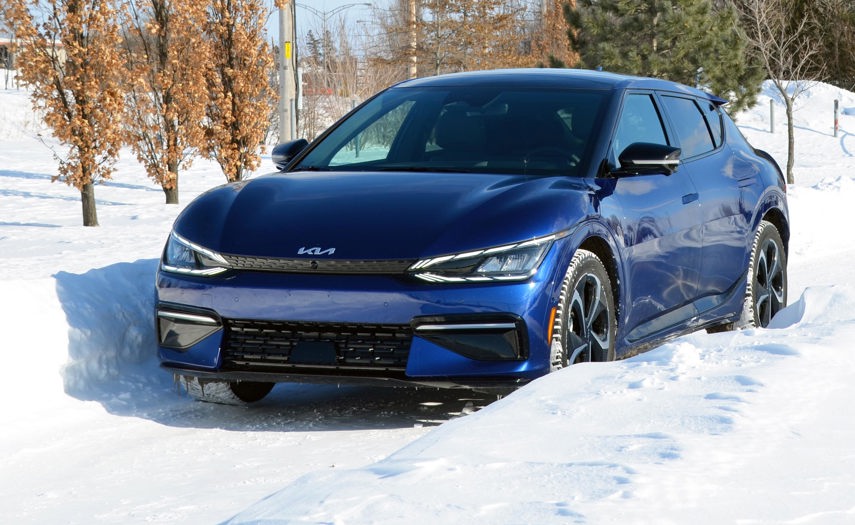
The latest EVs from these Korean automakers are excellent vehicles in their own rights, but we’re considering them together because they are nearly identical beneath their distinct body designs.
Believe it or not, Hyundai says the Ioniq 5’s styling was inspired by that of the Pony, the brand’s first mass-market vehicle and butt of many jokes. It’s hard to tell by looking at it, but the Ioniq 5 is large, with a wheelbase longer than that of the big Palisade SUV. The EV6 turns heads, too, with its sporty wagon profile and a cool-looking rear end.
Our reviewers praised the Ioniq 5 for a luxury-car-like feel enabled by a nicely damped suspension and comfortable front seats. And they liked the Kia’s base rear-drive layout for its competent and engaging handling, even if its drive isn’t as sporty as its looks. Both the Ioniq 5 and EV6 start out with a 167-hp rear-drive powertrain promising 354 and 373 km of range, respectively. A long-range option offers nearly 500 km of range and 225 hp, and both cars can be optioned with a second, front-mounted motor for 320 hp and AWD traction.
Both of these EVs offer a futuristic feel from the driver’s seat, with a large infotainment display and digital gauges. The EV6’s sporty look carries through to the cabin with a broad console that creates a cockpit-like driving position, while the Ioniq 5 offers a roomier feel by opening up the space between the front seats.
The Ioniq 5 is the one to choose from this pair if you prioritize practicality. It has a larger cargo area, and its rear seats move fore and aft to create more space for passengers or cargo as needed.
Of course, there are some demerits to discuss, too. In both cars, our reviewers complained that the top of the steering wheel obstructed their view of the instruments and, predictably, both cars’ touch-sensitive controls take some getting used to.
The Ioniq 5 and EV6 are both priced to start at $45,000, but you can option the Hyundai to $60,000 and the Kia to $62,000.
Kia Soul EV
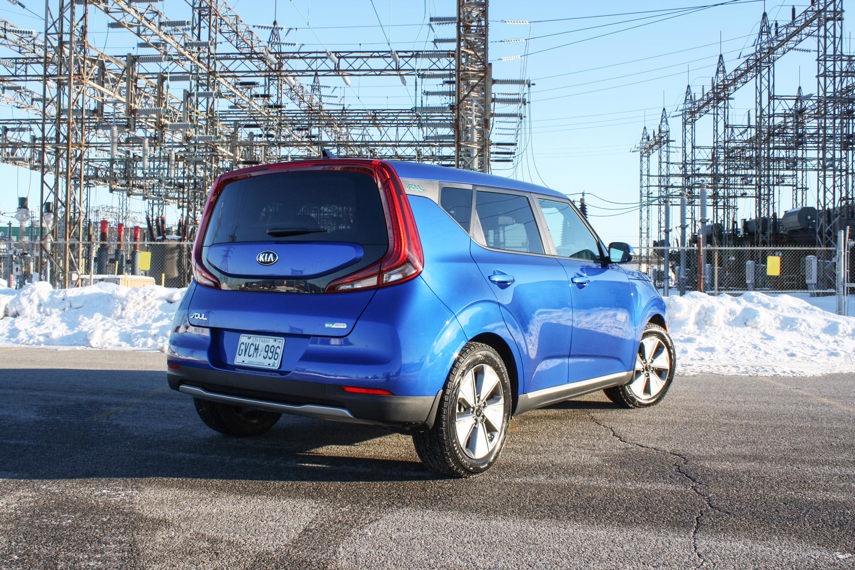
Introduced in 2015 – a lifetime ago in terms of electric vehicle technology – the Soul EV was Kia’s first-ever battery-powered model. What started out as a modest performer with 150 km of range has grown up into a truly appealing little EV.
Today’s Soul EV is based on the little hatchback’s third generation, whose styling is as delightfully odd as that of the original Soul that debuted in 2010. We’d argue Kia has leaned into the Soul’s shape for this latest generation: check out the taillights that emphasize the Soul’s height while softening up the sharp corners of its going-away view.
The Soul EV routinely wins over our reviewers with its fun driving feel, especially in the city, where its combination of electric-motor torque and a low centre of gravity give the impression of a much sportier vehicle. Highway performance is less impressive, but keep in mind the Soul starts out as a $21,000 gas-powered economy car.
Kia offers the Soul EV with two drivetrain options. The base model derives 134 hp and 248 km of range from its standard battery pack, while a bigger battery generates 201 hp and 383 km of range. Our jury likes that the uplevel battery easily lives up to its range promise in city driving.
Also playing in the Soul EV’s favour is the roomy cabin under its tall roof. Rear-seat space is particularly impressive, making this a useful city runabout for a small family.
On the downside, the Soul EV is not cheap: 2022 pricing starts at $43,000 for the base model, and the more powerful long-range model goes for $52,000 – money that will put you in long-range versions of the Kia EV6 or Hyundai Ioniq 5, both of which look more expensive than they are and promise nearly 500 km of range.
Tesla Model 3
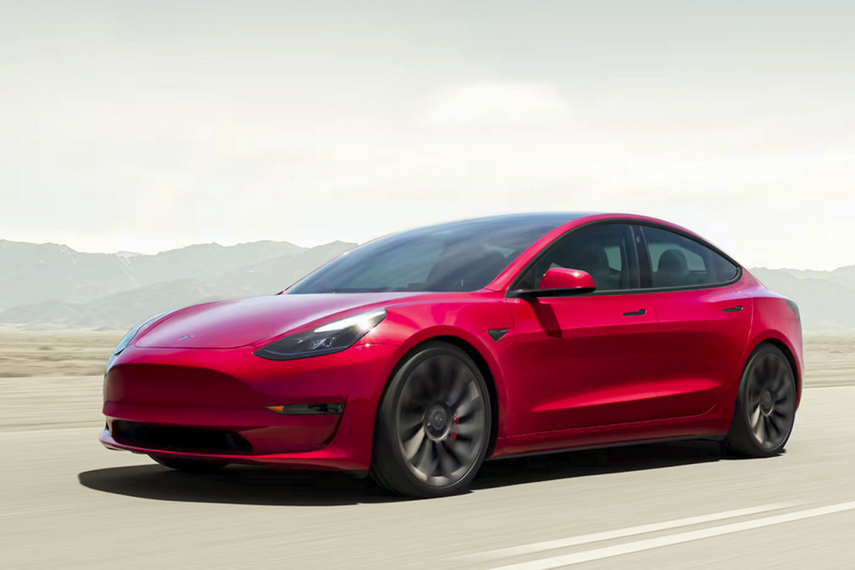
The Tesla Model 3 is the EV to beat in the sub-$50,000 category, even though it only qualifies for that price point in a stripped-down 146-km setup we can’t imagine many people would choose – especially considering its $45,099 MSRP was $100 above the previous $45,000 cutoff for the federal government’s EV purchase incentive program. As of April 25, 2022, that cutoff has been raised to $55,000 for passenger cars like the Model 3, though it remains absent from the list of vehicles eligible for the iZEV rebate.
But a base price is a base price, even if spending a little more than $61,000 gets you more than 430 km of range, and a Long Range trim promises 576 km for $72,000.
If you have that kind of dough to blow, you’ll get a compact EV that performs like a European sport sedan with a combination of breathtaking acceleration and entertaining handling.
The Model 3’s cabin is oriented around a large touchscreen that controls most of its secondary functions and even houses the speedometer. The dash is an exercise in minimalism, which is refreshing given how busy many modern car interiors have become.
Not for nothing, the Model 3 was one of Canada’s best-selling EVs in 2021, so Tesla has clearly done something right with this car’s combination of price, performance, and the intangible gotta-have-it factor. And credit where credit is due, we’d argue this car has advanced the state of the EV like no other battery electric on the market today.
Volkswagen ID.4
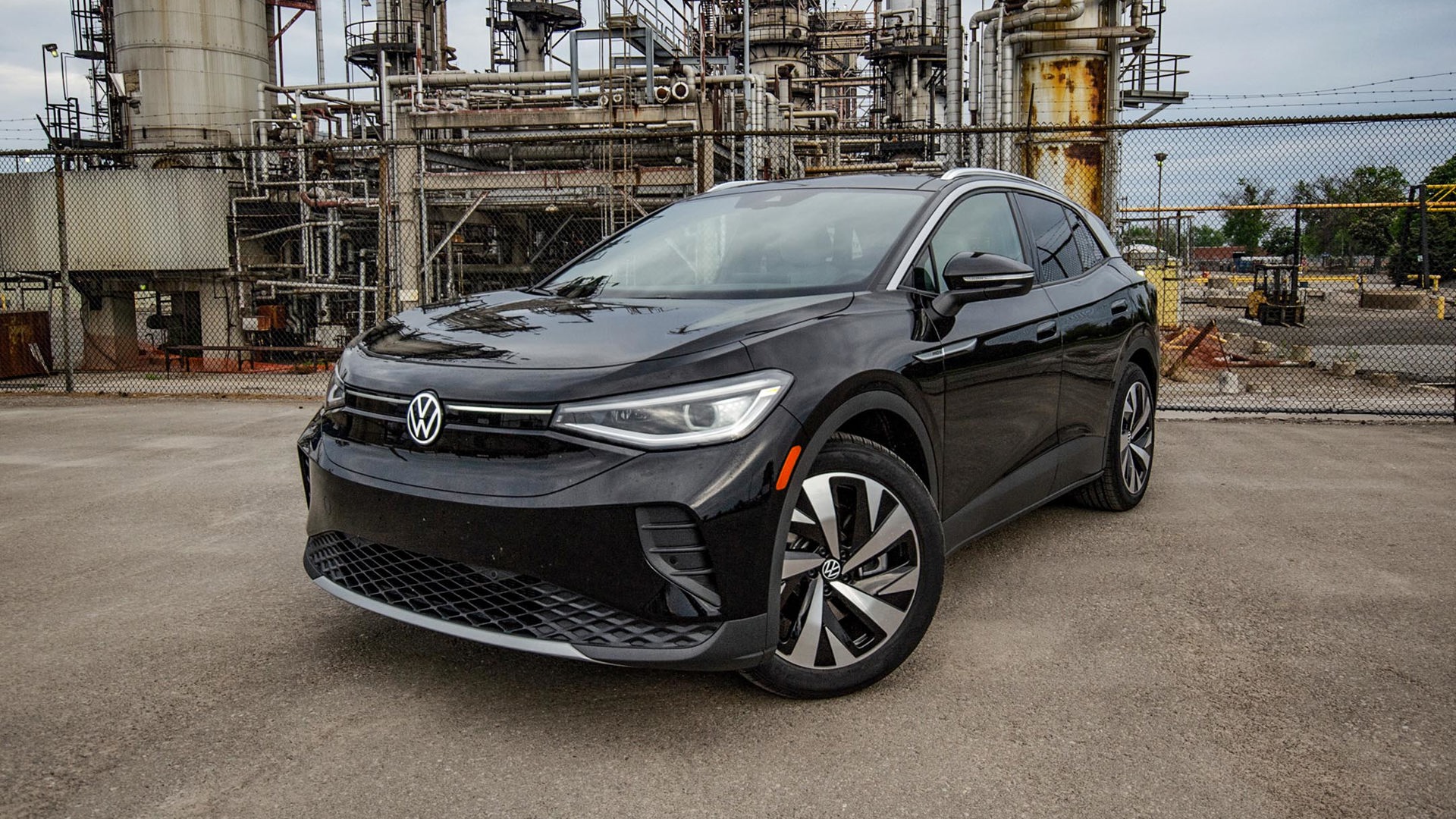
The Volkswagen ID.4 marks two EV firsts for the company’s North American operations: It’s the first EV sold here that’s based on the brand’s new modular electric vehicle platform, which will also underpin the retro-looking ID Buzz van, and it’s VW’s first truly compelling electric car, following the E-Golf with its modest driving range.
The ID.4 makes big promises for the future of VW’s EV endeavours. It’s handsome and practical, and its maker says it will go more than 400 km on a full charge of its battery in its $45,000 entry-level Pro trim.
Our jury fell for the ID.4’s comfortable cabin, where you get to enjoy its smooth, quiet, and composed ride from nicely done front seats. Handling lives up to VW’s reputation, too, thanks in part to how the floor-mounted battery lowers the centre of gravity. And while the ID.4’s base model offers a modest 201 hp from a single rear-mounted motor, the AWD Pro trim upgrade adds a front motor for AWD and 295 hp, but gives up a little bit of driving range for that extra performance.
VW missed the mark in a few areas, however. Most of the ID.4’s secondary controls use touch-sensitive buttons that are hard to use while the car is moving. There’s also no front trunk like you’ll find in many other EVs.
But never mind our opinions: It says something that VW Canada has already sold all the ID.4s it had earmarked for the 2022 model year. If you go shopping for one now, you’ll have to pre-order a 2023 model.
New EVs Under $50K to Consider
Chevrolet Bolt EV/Bolt EUV
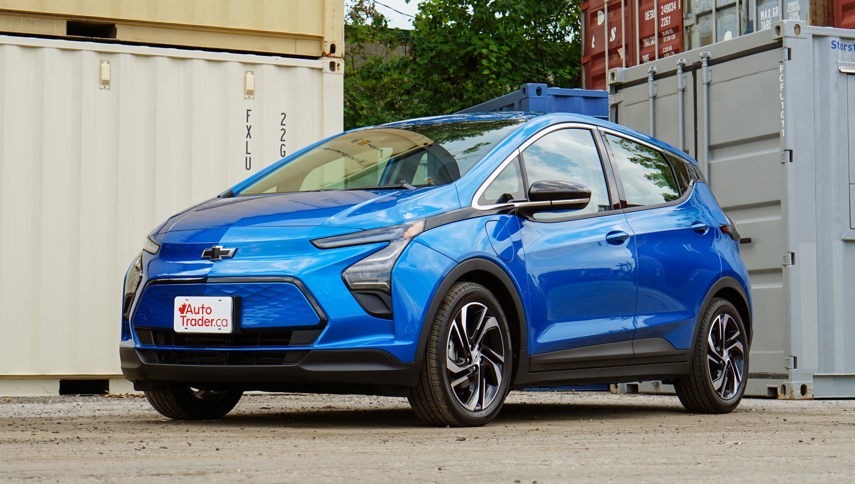
Chevrolet redesigned the Bolt for 2022 and added a crossover-inspired variant called the EUV. Both EVs are essentially the same car with some styling differences.
While you might not be sold on the Bolt’s upright styling, the tall roofline translates into good front-seat headroom, and there’s plenty of useful cargo space with the rear seats folded.
Our jury found the Bolt’s performance more inspiring than its 200-hp rating promised and, as in many EVs, handling is fun thanks to the low centre of gravity created by the heavy, low-mounted battery pack.
AutoTrader’s experts also appreciate the Bolt’s intuitive infotainment system and a one-pedal driving setting that makes great use of the car’s regenerative brakes to charge the battery while slowing down.
Chevrolet prices the 2022 Bolt EV at $38,198, down nearly $7,000 compared to the 2021 model. While that price includes a number of useful convenience and comfort features, Chevy curiously doesn’t offer adaptive cruise control, surround-view cameras, or a head-up display – items that are available, if not standard, in other EVs.
Mazda MX-30
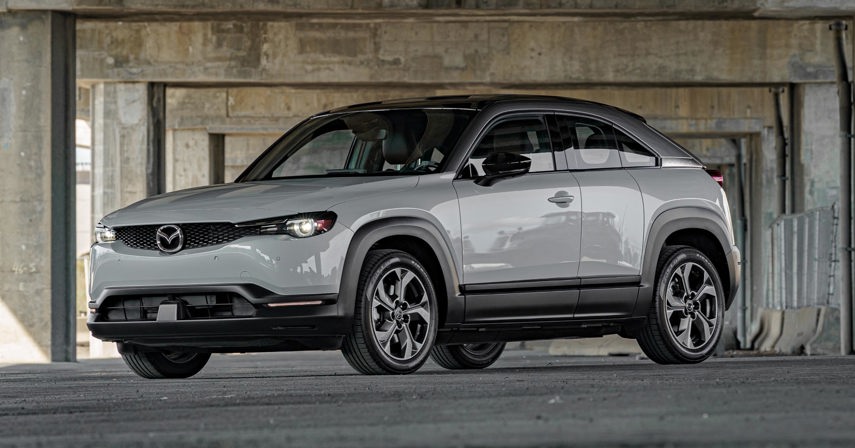
Mazda’s first-ever electric vehicle, the MX-30 subcompact crossover, came to market too late for our jury to vote on it for the 2022 AutoTrader Awards. Still, we thought it worth a mention here as the first of several plug-in models Mazda is planning to launch in the next couple of years.
While the $42,150 MX-30 is a big deal as the first battery electric model from a small company like Mazda, it’s not particularly ground-breaking in the wider EV market. Its small battery promises just 161 km of driving range, the least of any save for the bargain-basement version of the Tesla Model 3.
The MX-30 does boast some neat design features, like its rear-hinged rear doors and a cabin full of sustainable materials. And in his first drive review, AutoTrader’s Jeff Wilson praised the MX-30’s smooth – if not thrilling – power delivery, natural braking feel, and sophisticated suspension tuning.
Mazda says it will grow the MX-30 lineup this year with a PHEV version partly powered by a rotary engine, and plug-in hybrid options for the brand’s forthcoming mid-size CX-70 and CX-90 SUV models. The company has also said it will launch a full line of EVs on a dedicated platform sometime “around 2025.”
Best EVs Over $50,000 to Buy
Ford Mustang Mach-E
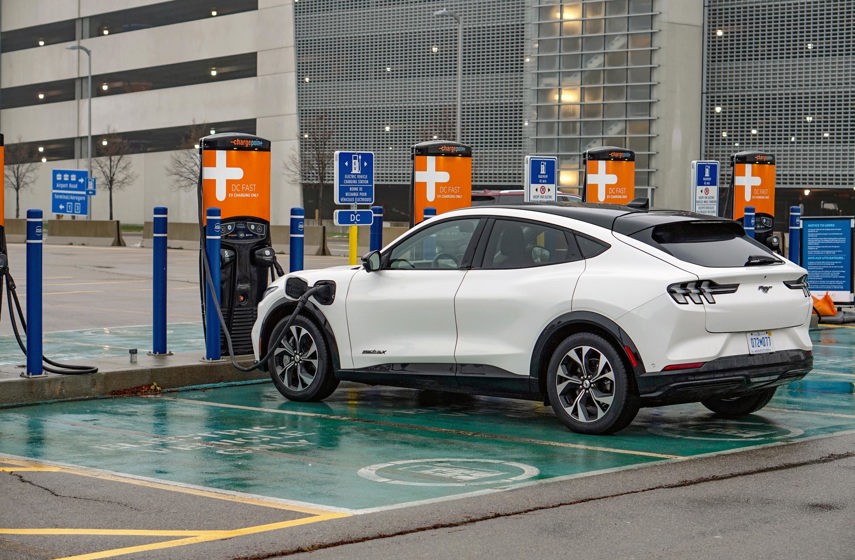
Like Volkswagen, Ford introduced its customer base to EVs with a compact hatchback, a battery-powered version of the Focus. Last year, Ford got serious about staking its place in the battery electric marketplace with the Mustang Mach-E SUV.
Our experts think Ford did a great job with the Mach-E’s styling, which is more attractive than the Model Y, and a powertrain that balances performance and energy efficiency.
Ford prices the 2022 Mach-E to start at $51,495 with a 266-hp RWD powertrain that’s good for nearly 400 km of driving range, or 360 km with AWD. You’ll get the most range in the 505-km California Route 1 configuration, while the $85,959 GT Performance Edition is the Mach-E’s speediest setup with 480 hp. At those prices, all that’s missing are a handful of comfort features, like ventilated front seats and heated rears, neither of which are offered even as options.
AutoTrader Road Test Editor Dan Ilika summed up his review of the Mustang Mach-E by declaring it “pretty close to ... a grand slam” with “decent range, smooth driving, and quick charging.”
Porsche Taycan

Unsurprisingly, Porsche didn’t go halfway with its first all-electric model, the Taycan, which started out as a sport sedan at its 2020 launch and added a Cross Turismo station wagon variant last year.
The $119,900 Taycan 4 Cross Turismo is the lineup’s starting point, with a 375-hp all-wheel powertrain that promises 346 km of driving range. From there, Porsche mostly adds performance, culminating in a Turbo S configuration with 616 hp and about 325 km of range.
In her first drive review of the Taycan Cross Turismo Turbo, AutoTrader Editor in Chief Jodi Lai called it “electric, both literally and figuratively,” and a “triumph of automotive engineering.” She was smitten by its powertrain, which promises zero-to-100 km/h acceleration in 3.3 seconds and feels every bit that fast, and details like the car’s “obsessive build quality” and upscale finishes like rose gold interior trim that she thought made the cabin feel “even more special and luxurious.”
And in a 2020 review of the original sedan variant, Dan Ilika wrote that the Taycan’s balanced handling reminded him of the Cayman despite the Taycan’s larger size. “If this is the brand’s future, bring it on,” he concluded.
Polestar 2
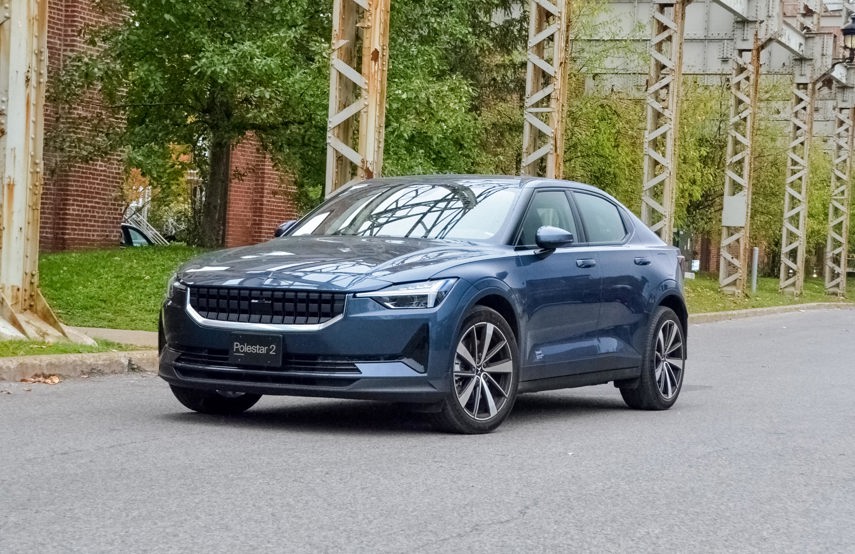
Volvo launched its upscale EV brand in 2020 with the Polestar 1, a 619-hp PHEV coupe with a price tag within spitting distance of $200,000. While those specs helped Polestar make a grand entrance, the all-electric Polestar 2 is a more significant model, with its crossover-coupe styling and much more accessible price.
The 2022 Polestar 2 starts at $49,900 with a 231-hp, single-motor drivetrain promising 435 km of range, with optional dual-motor setup that makes 408 hp and will go 401 km.
The typical crossover coupe’s combination of a car-like body riding on a tall suspension is a controversial one, but we think Volvo has executed it well with the Polestar 2’s chunky body and attractive proportions. The little touches help, like the gold-painted brake calipers behind big wheels. “Look closely,” wrote Steven Bochenek, “and you’ll be aesthetically delighted.”
Meanwhile, Bochenek said the dual-motor model’s 487 lb-ft of torque will “catapult you into the near future” while the car’s low centre of gravity anchors you to the road with impressive handling.
And, because the Polestar 2 is a Volvo product, it promises a safe journey for everyone on board with standard features like a surround-view monitor, front and rear parking sensors, and lane-keep assist.
New EVs Over $50K to Consider
Audi Q4 E-tron
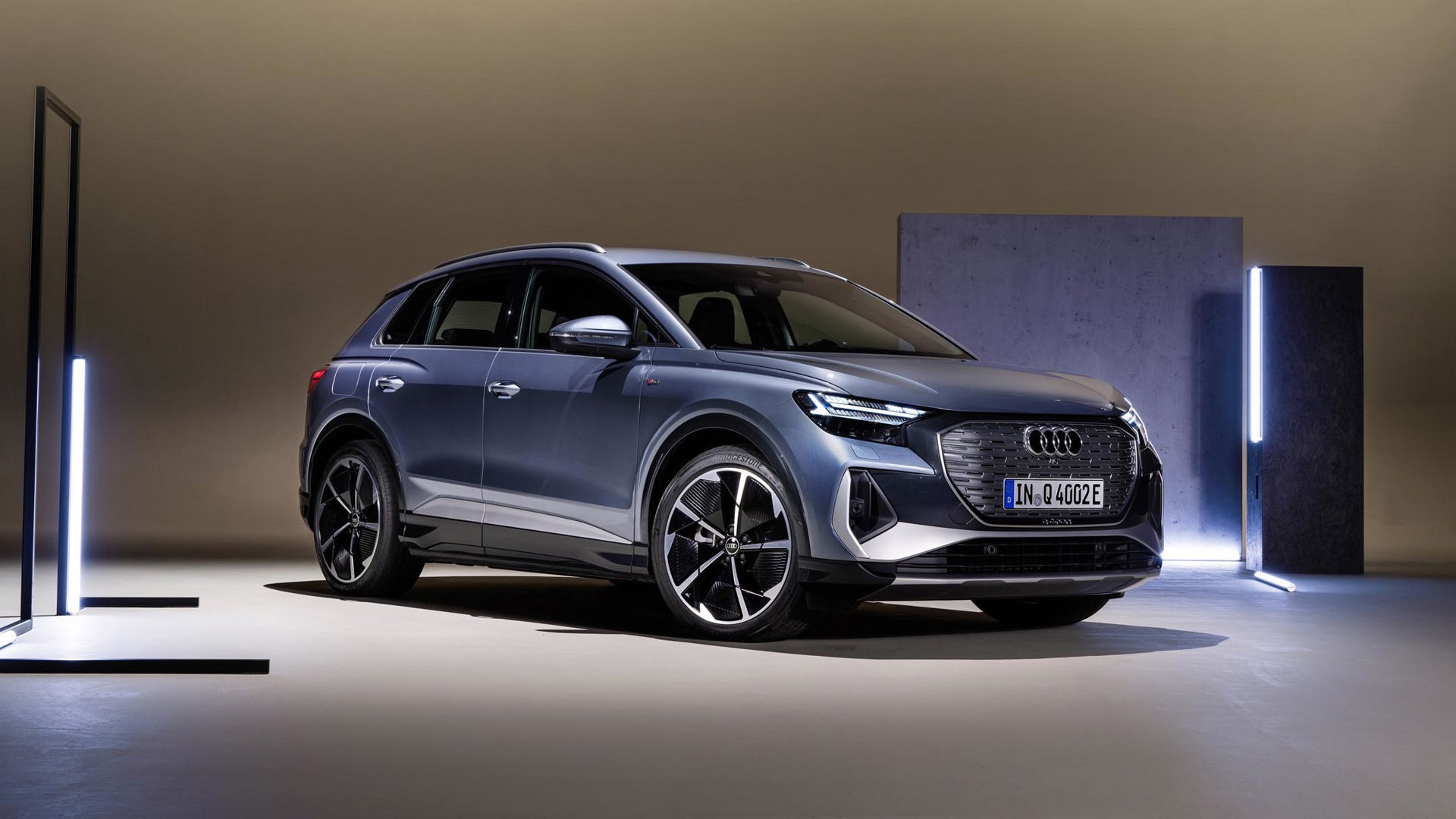
Audi revealed details of the compact Q4 E-tron all-electric SUV about a year ago following months of teasers. For the record, it’s the brand’s first EV with what we consider a proper name; the others are the Audi E-Tron mid-size SUV and the E-Tron GT, a sport sedan that shares its underpinnings with the Porsche Taycan.
The handsome Q4 E-Tron is aimed at the meat of the upscale crossover segment, with two motors making 294 hp, a battery good for 388 km of driving range, and a $59,950 starting price that about splits the difference between the base and top prices for the similarly sized gas-powered Q5.
Audi also offers the Q4 in a Sportback variant with the same drivetrain but a sleeker roofline and a higher price.
BMW i4

The BMW i4 is the brand’s newest electric car model, a four-door compact sedan that’s closely related to the 4 Series. In his March 2022 review of the dual-motor AWD M50 variant, Jeff Wilson gave the i4’s power (536 hp/586 lb-ft) a rare (for him) 10/10 rating, citing the car’s “mind-bending” ability to “summon that much thrust instantaneously,” and leading him to surmise that BMW’s claimed 3.9-second zero-to-100 km/h acceleration time is conservative.
Wilson also praised the i4 for its “genuinely fun, sporty” driving feel, despite the car feeling like every gram of its 2,300-kg mass, and the fact that it shares its body with the 4 Series and “bucks the EV trend of looking like an over-styled spaceship.”
Finally, while the i4 lacks the front trunk found in many recent EVs, its hatchback opens to reveal a vast cargo area. Wilson also found the latest version of BMW’s iDrive infotainment system intuitive.
The i4 M50 Wilson tested carries a base price of $72,990, but there’s also an entry-grade rear-drive eDrive40 version that comes with 335 hp and a $54,990 starting tag. BMW’s driving range estimates for the i4 are 435 km for the M50 and 484 km in the eDrive40 version.
BMW iX
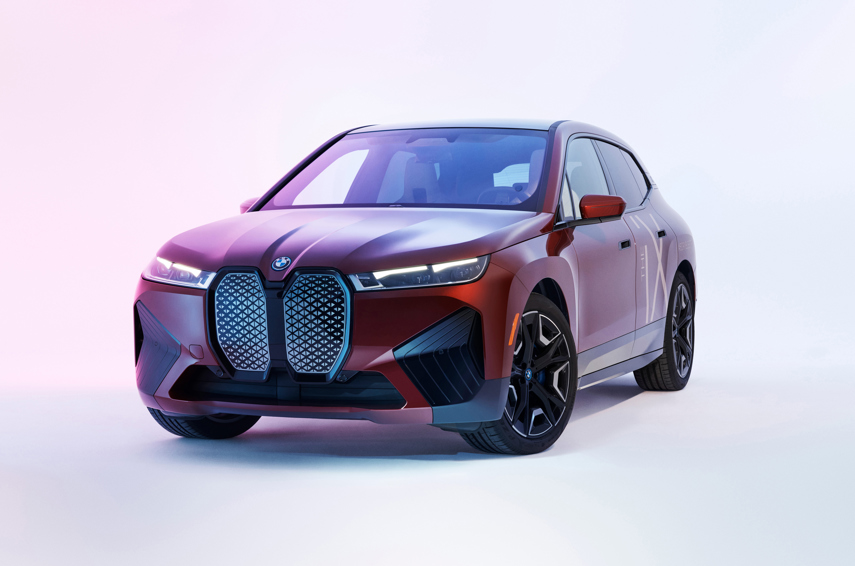
BMW’s other new entry in the EV race is the iX, which is new to the market.
The iX’s dimensions make it an electric analogue to BMW’s more conventional X5 model. Impressively, BMW has priced the 322-hp iX xDrive50 to start at $79,990 (for a 2023 model; it launched as a 2022), which is just $800 more than the starting tag for an X5. However, the price quickly climbs to $121,750 if you opt for the M60 model and its 532 hp and 749 lb-ft of torque. With that kind of power under your right foot, you could fairly cross-shop the M60 against the gas-powered X5 M – which is $12,000 more expensive.
If performance is important to many BMW shoppers, driving range is a big deal for EV buyers, and the iX does well in that regard too, with the xDrive50’s estimates topping out at 521 km. In a recent test, our expert saw over 600 km of range. We’re also impressed by the iX’s interior, which uses fancy details and trim materials to make it feel really special.
Ford F-150 Lightning
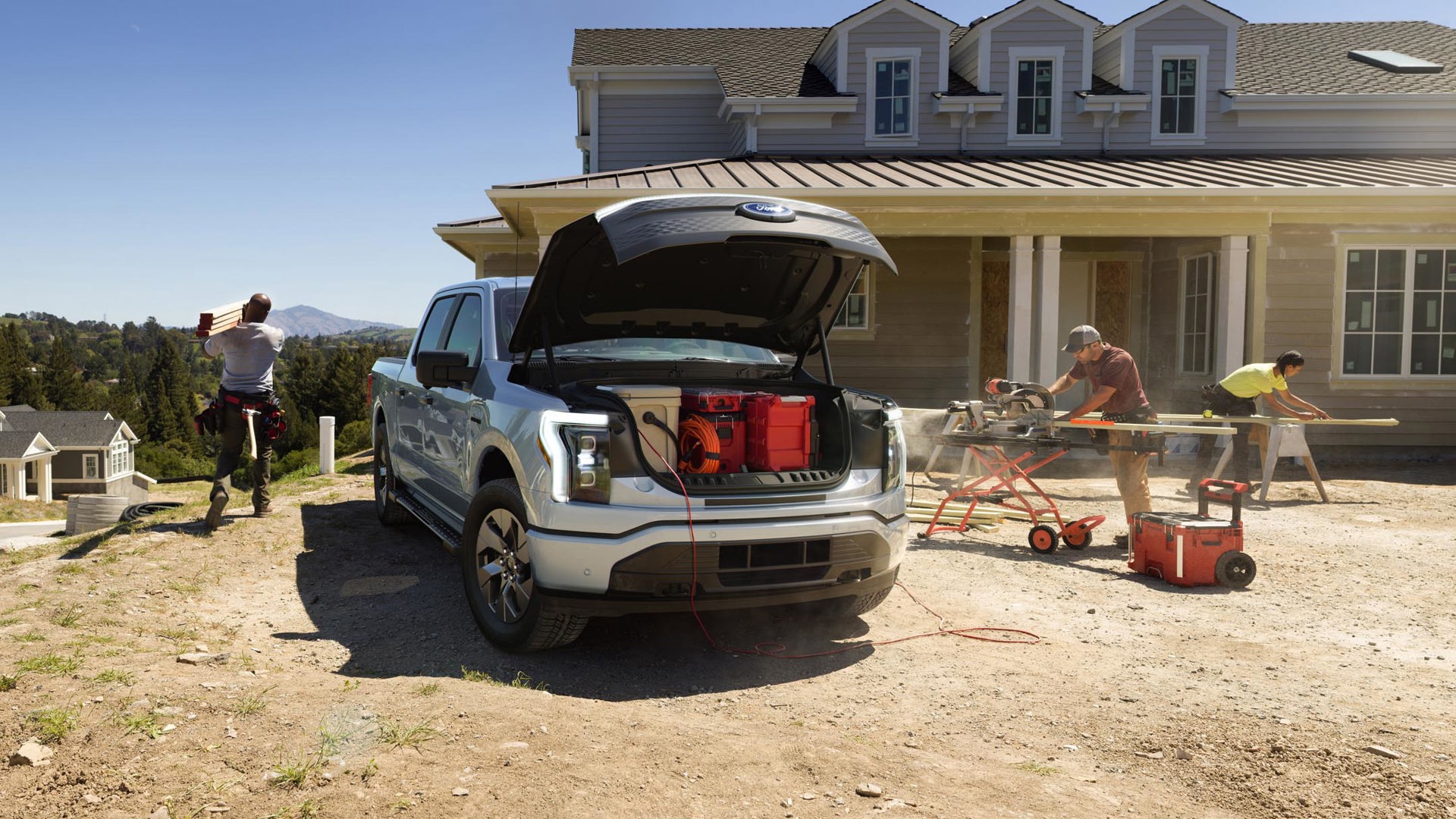
The F-150 Lightning is a significant vehicle for Ford and the auto industry at large. When it reaches showrooms, it will be Canada’s first all-electric pickup truck from an established automaker and will boost the F-150’s already incredible popularity.
For a starting price of $68,000 (or $58,000 for a fleet-only version called the Lightning Pro), Lightning buyers will get 426 hp, 775 lb-ft of torque, 370 km of range, and more than 4,500 kg of towing capacity. An Extended Range configuration promises 515 km, and a $110,000 Platinum package combines upscale trimmings with 483 km of driving on a single charge.
Mercedes-Benz EQC
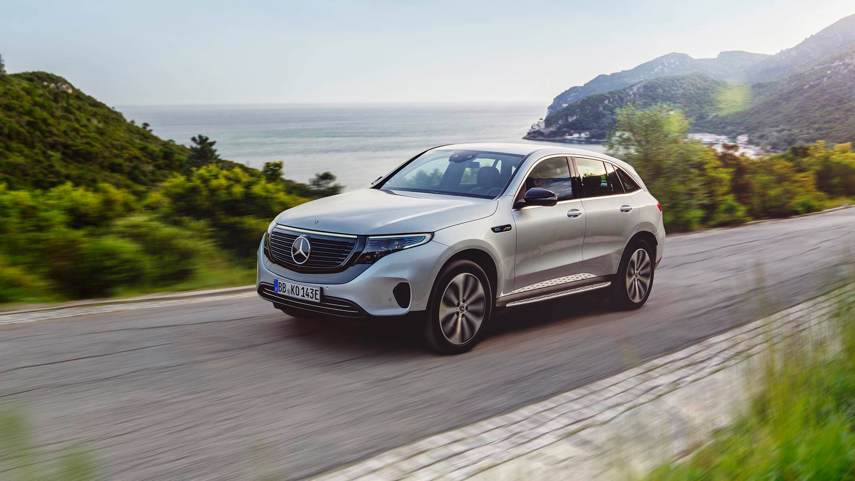
The EQC was initially supposed to be the vehicle to launch the Mercedes-Benz EQ-family of EVs in North America, but its launch here was pushed back to make room for the EQS sedan, which Benz felt was better-suited for introducing this continent to its electric-vehicle aspirations.
Therefore, we don’t know many details about the EQC that will eventually go on sale here, but we do know it will be closely related to the brand’s current GLC compact SUV.
By the time it gets here, Mercedes will be years behind competitors like BMW, Genesis and Volvo in fielding an electric SUV, and in the meantime, Benz retailers don’t even have a plug-in hybrid option to offer their customers. Still, we imagine the brand’s loyalists will be happy enough to wait for the EQC to get into an electric SUV with a three-pointed star on the grille.
Mercedes-Benz EQS
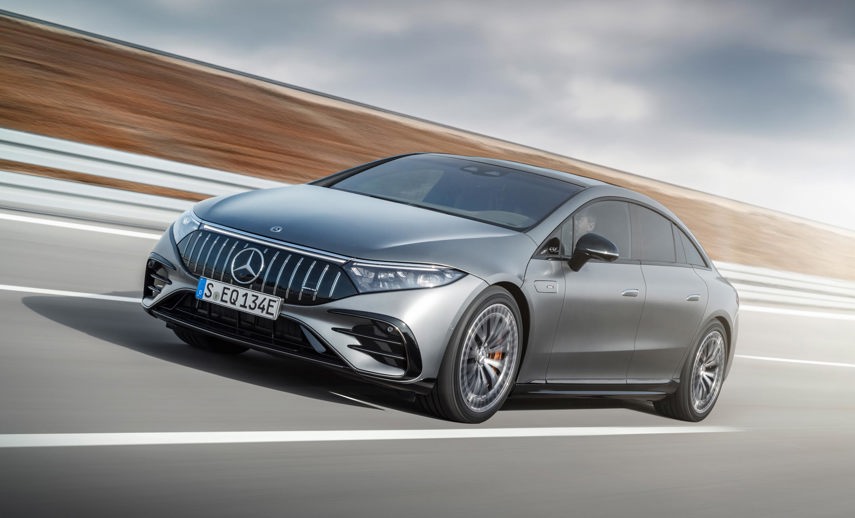
If you’re quite impatient to get behind the wheel of an electric Mercedes, the EQS is the only way to do it right now. Intended as an electric equivalent to the full-size S-Class, the EQS’s appearance shares little in common with it, aside from its four-doors-and-a-trunk styling.
We haven’t had a chance to publish a full test drive review of the EQS, so we can’t share any driving impressions here. However, we do know this slick-looking car is loaded with tech, like a 56-inch “Hyperscreen” infotainment display, and four-wheel steering that makes the EQS ridiculously maneuverable at low speeds and increases stability at high speeds.
Last fall, Benz revealed the EQS 580 would be priced to start at $144,200. That has since increased to $146,500, but for that you get 516 hp and nearly 550 km of range. It’s also only a few grand more than the gas-powered S-Class.
